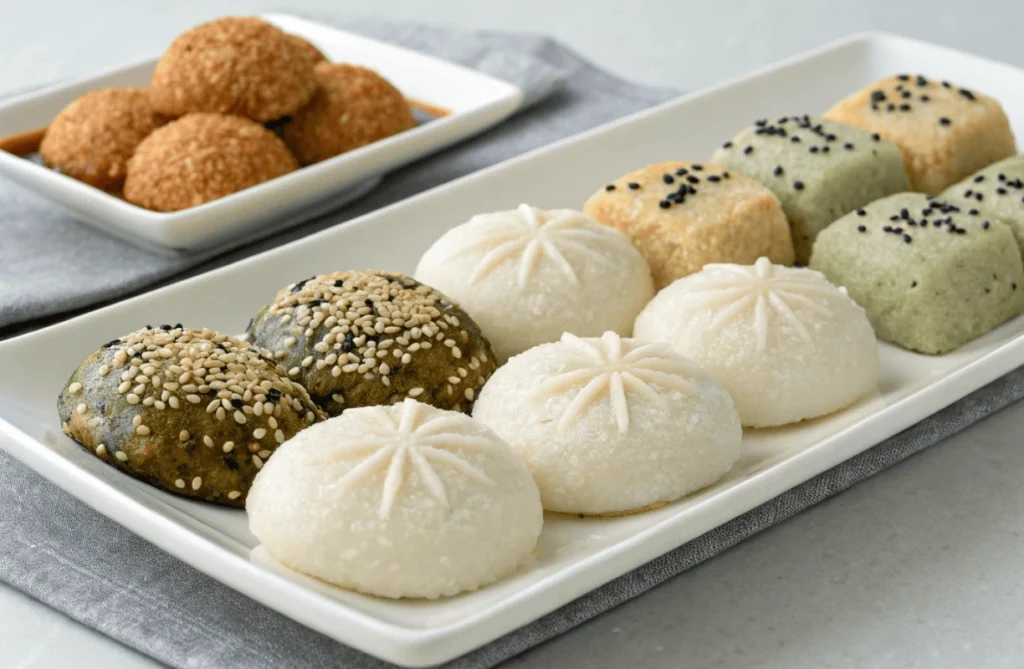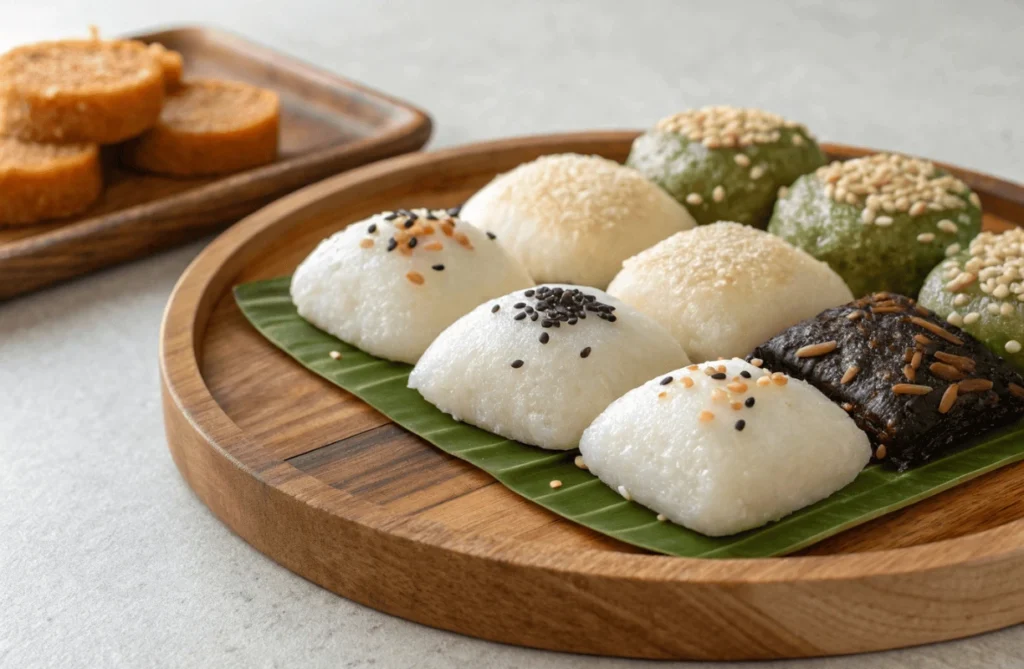Rice-based snacks, including rice cakes, have been a staple in many cuisines for centuries. From Korea’s Tteok to Japan’s Senbei and Thailand’s crispy rice treats, these simple yet delicious bites are incredibly versatile. Whether you’re looking for a gluten-free snack, a healthy alternative to bread, or just a delicious way to enjoy rice, rice cakes are a must-try.
One of the best things about homemade rice patties is that you can customize them to your taste. They can be savory, slightly salty, or even sweet, depending on the flavors you choose. You can make them crispy by pan-frying or baking them, or keep them soft and chewy by steaming. Whatever your preference, this guide will help you achieve perfectly crispy and flavorful results with minimal effort.
In this article, you’ll learn:
The best type of rice to use for making rice snacks
A step-by-step guide to preparing and cooking rice cakes
Chef-approved tips for achieving the perfect texture
How to store, reheat, and customize your rice snacks for different flavors
By the end of this guide, you’ll be able to make delicious homemade rice cakes that rival any store-bought version. Ready to get started? Let’s dive in!
Ingredients
To make crispy homemade rice cakes, you’ll need simple ingredients that you likely already have in your kitchen. The key is to choose the right type of rice and seasonings to enhance the flavor.
Essential Ingredients:
- 2 cups of cooked rice (sticky rice or short-grain rice works best)
- ½ teaspoon salt (for flavor enhancement)
- 1 tablespoon sesame oil (for frying and added aroma)
- ½ teaspoon garlic powder (optional, for a richer taste)
- 1 tablespoon finely chopped green onions (optional, adds freshness)
- 1 tablespoon sesame seeds (optional, for a nutty crunch)
Why These Ingredients?
- Short-grain or sticky rice is preferred because it holds its shape well when formed into cakes. Long-grain rice is too loose and doesn’t bind properly.
- Sesame oil gives the rice cakes a slightly nutty flavor while ensuring a crispy golden crust when frying.
- Garlic powder and green onions add an extra layer of taste but can be omitted if you prefer a more neutral flavor.
- Sesame seeds provide a bit of texture and nuttiness, enhancing the overall mouthfeel of the rice snacks .
These simple ingredients come together to create a crispy-on-the-outside, chewy-on-the-inside rice cake that’s both flavorful and satisfying. Feel free to experiment by adding your favorite seasonings!

Step-by-Step Instructions
Making rice cakes at home is simple and requires minimal equipment. Follow these steps for perfectly crispy and delicious rice cakes every time.
1. Prepare the Rice
Start with freshly cooked rice. If you’re using leftover rice, warm it slightly in the microwave or on the stove. The rice should be slightly sticky so that it holds together when shaped. If it’s too dry, add a teaspoon of water and mix well.
For best results, use short-grain or sushi rice, as they contain more starch, which helps the cakes bind together. Avoid using long-grain rice like Basmati or Jasmine, as they tend to fall apart.
2. Shape the Rice Cakes
Transfer the cooked rice to a large bowl. Add salt, sesame seeds, and any additional seasonings. Using your hands, gently press and shape the rice into small patties (about ½ inch thick and 2-3 inches in diameter). Lightly wet your hands with water or oil to prevent sticking.
If you prefer a crispy texture, press the cakes firmly to create a compact shape. For softer rice cakes, leave them slightly looser.
3. Pan-Fry for a Crispy Finish
Heat a non-stick pan over medium heat and add sesame oil. Place the rice cakes in the pan and cook for 3-4 minutes per side until golden brown and crispy. Avoid flipping too early—let the crust form first for the best texture.
For extra crispiness, press each rice cake down lightly with a spatula while cooking. You can also bake them in the oven at 375°F (190°C) for 15-20 minutes, flipping halfway through.
4. Serve & Enjoy
Once crispy and golden, remove the rice cakes from the pan. Serve warm with soy sauce, spicy mayo, or teriyaki glaze for dipping. You can also top them with avocado, smoked salmon, or sautéed vegetables for a more filling snack.
Best Chef Tips for Perfect Rice Snacks
Even simple recipes require a few tricks to achieve the best results. Here are some expert tips to ensure your rice snacks come out crispy, flavorful, and perfectly textured every time.
1. Use Sticky Rice
The key to well-shaped rice snacks is using the right type of rice. Short-grain or sushi rice has the right amount of starch to hold the cakes together. Avoid dry, fluffy rice varieties, as they won’t bind properly.
2. Don’t Skimp on Oil
For that signature crispy crust, use enough oil when frying. Sesame oil not only adds crispiness but also infuses the rice snacks with a delicious nutty aroma.
3. Press Down While Cooking
To get an even crust, gently press the rice cakes down with a spatula while frying. This ensures maximum surface contact with the pan, leading to a crispier finish.
4. Experiment with Flavors
Get creative by adding ingredients like cheese, chili flakes, or crushed seaweed to enhance flavor. You can even make sweet rice cakes by adding honey and cinnamon!
Nutritional Benefits of Rice Cakes
Rice snacks are often marketed as a healthy snack option, but are they really good for you? Let’s take a closer look at their calorie content, macronutrients, and how they compare to other snacks.
Caloric and Macronutrient Content
Rice snacks are low in calories and fat, making them a go-to choice for those watching their weight. A standard plain rice cake (about 9g) contains:
- 35 to 50 kcal, depending on the brand and size
- Less than 1g of fat
- 8-10g of carbohydrates, mostly from starch
- Minimal protein and fiber unless enriched with other ingredients
While they’re low in calories, they also have a high glycemic index, meaning they can cause quick spikes in blood sugar levels.
Are Rice Cakes a Good Choice for a Diet?
Rice snacks can be part of a healthy diet if paired with protein or fiber-rich toppings, such as:
Peanut butter and banana for a balanced snack
Avocado and smoked salmon for healthy fats and protein
Cottage cheese and berries for a mix of protein and antioxidants
However, eating plain rice snacks alone may not be very filling due to their low fiber and protein content.
Comparison with Other Snacks
Compared to other popular snacks, rice snacks have advantages and disadvantages:
- Rice snacks vs. bread: Lower in calories but also lower in nutrients
- Rice snacks vs. biscuits: Less sugar and fat, making them a healthier alternative
- Rice snacks vs. chips: Lower in salt and fat, but may not be as satisfying due to the lack of fats and protein
Ultimately, rice cakes can be a good snack option when eaten in moderation and combined with nutrient-dense ingredients.

Rice Cakes Around the World: Popular Dishes
Rice cakes are enjoyed in many cultures, each with its unique way of preparing them. Here are some famous rice cake dishes from different parts of the world:
Korea: Tteokbokki (Spicy Rice Snacks )
One of Korea’s most popular street foods, tteokbokki features chewy rice cakes cooked in a spicy-sweet gochujang sauce. Often served with fish cakes and boiled eggs, this dish is a must-try for spice lovers.
Japan: Mochi
Mochi are soft, chewy rice cakes made from glutinous rice, often filled with sweet fillings like red bean paste, matcha, or ice cream. They are a staple in Japanese festivals and celebrations.
China: Nian Gao (New Year’s Cake)
Nian Gao is a traditional Chinese rice cake eaten during the Lunar New Year. It is slightly sweet and symbolizes prosperity and good fortune. It can be steamed, fried, or used in stir-fries.
Western Countries: Industrial Rice Cakes
In the West, rice cakes are commonly sold as low-calorie snacks, often flavored with chocolate, caramel, or cheese. They are popular in fitness communities as a gluten-free and diet-friendly alternative to bread.
Ultimately
If you’re looking for a crispy, versatile, and easy-to-make dish, homemade rice snacks are the perfect choice. Whether enjoyed as a light bite or a hearty meal base, they offer endless possibilities for customization. Experiment with different seasonings, textures, and toppings to create a unique flavor that suits your taste.
Ready to elevate your home cooking? Try this recipe today and experience the joy of making your own rice-based treats. And for an exceptional dish to complement your meal, don’t miss out on this ribeye roast recipe—a must-try for meat lovers!
FAQs: Your Rice Cake Questions Answered
1. Can I bake rice cakes instead of frying?
Yes! To make a healthier version, bake the rice snacks at 375°F (190°C) for 15-20 minutes, flipping halfway through for even crispness.
2. How do I store leftover rice cakes?
Store them in an airtight container in the fridge for up to 3 days. Reheat in a pan or oven to restore crispiness.
3. Can I make rice snacks with brown rice?
Yes, but brown rice is less sticky, so it may not hold together as well. Adding a tablespoon of mashed potatoes or cornstarch can help.
4. Are rice cakes gluten-free?
Yes! Rice snacks are naturally gluten-free, making them a great option for those with dietary restrictions.
*Final Thoughts
This rice cake recipe is the perfect way to enjoy a delicious, homemade snack with minimal effort. By following these simple instructions and expert tips, you’ll master the art of making crispy, flavorful rice cakes every time!
Ready to give it a try? Let us know your results in the comments!

